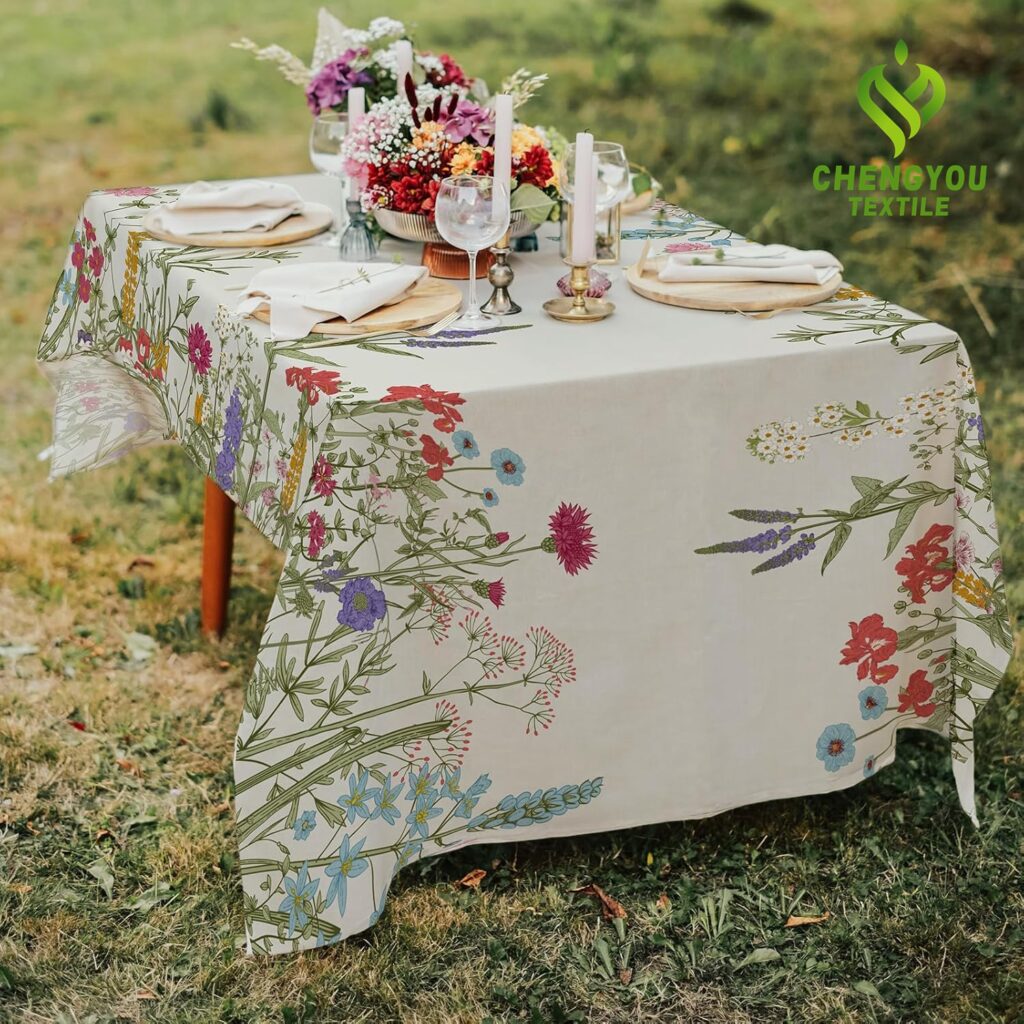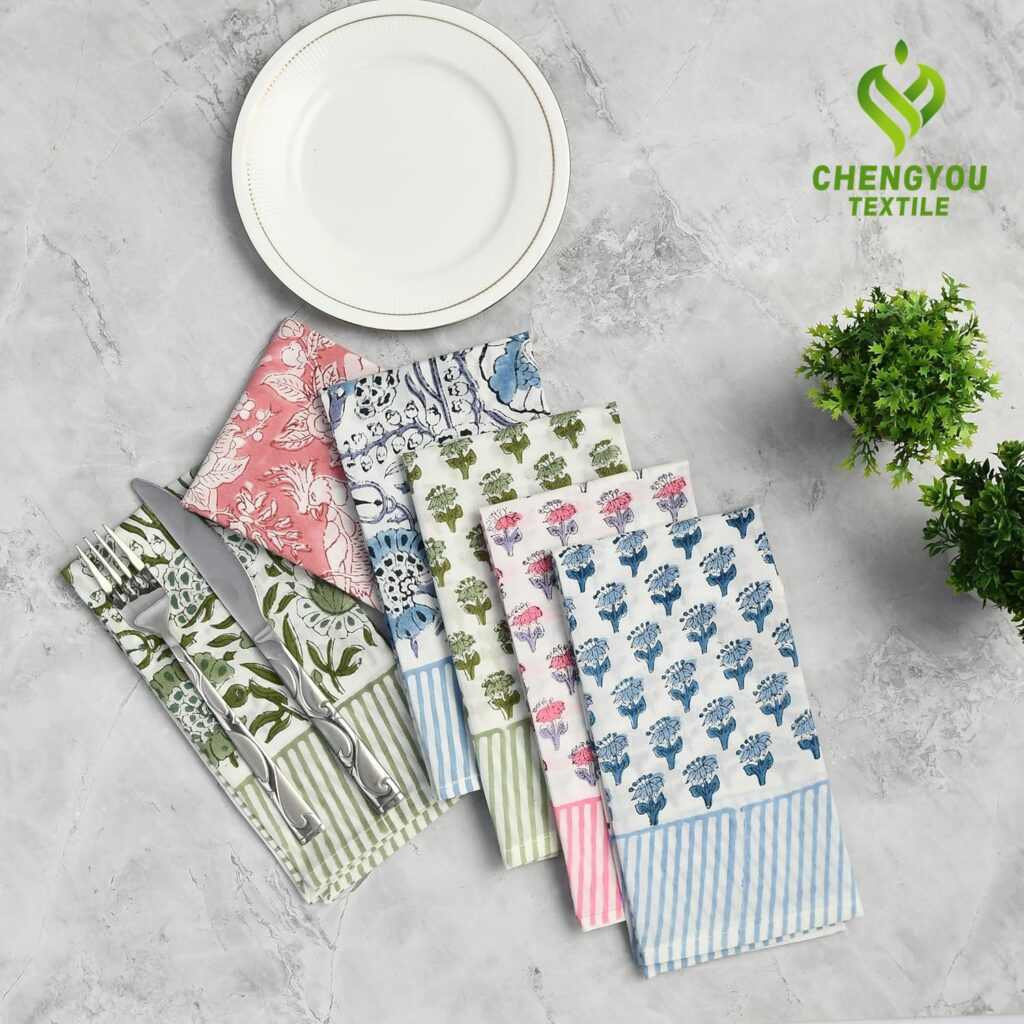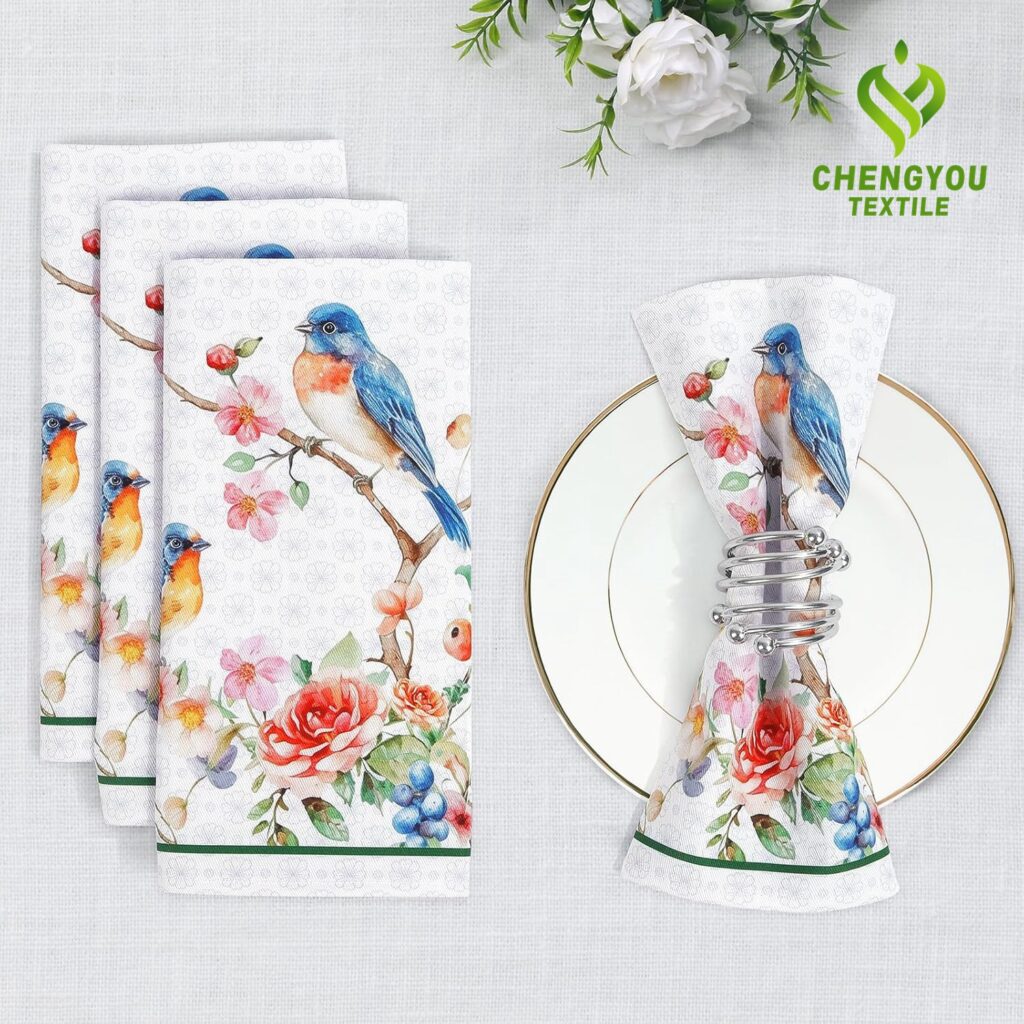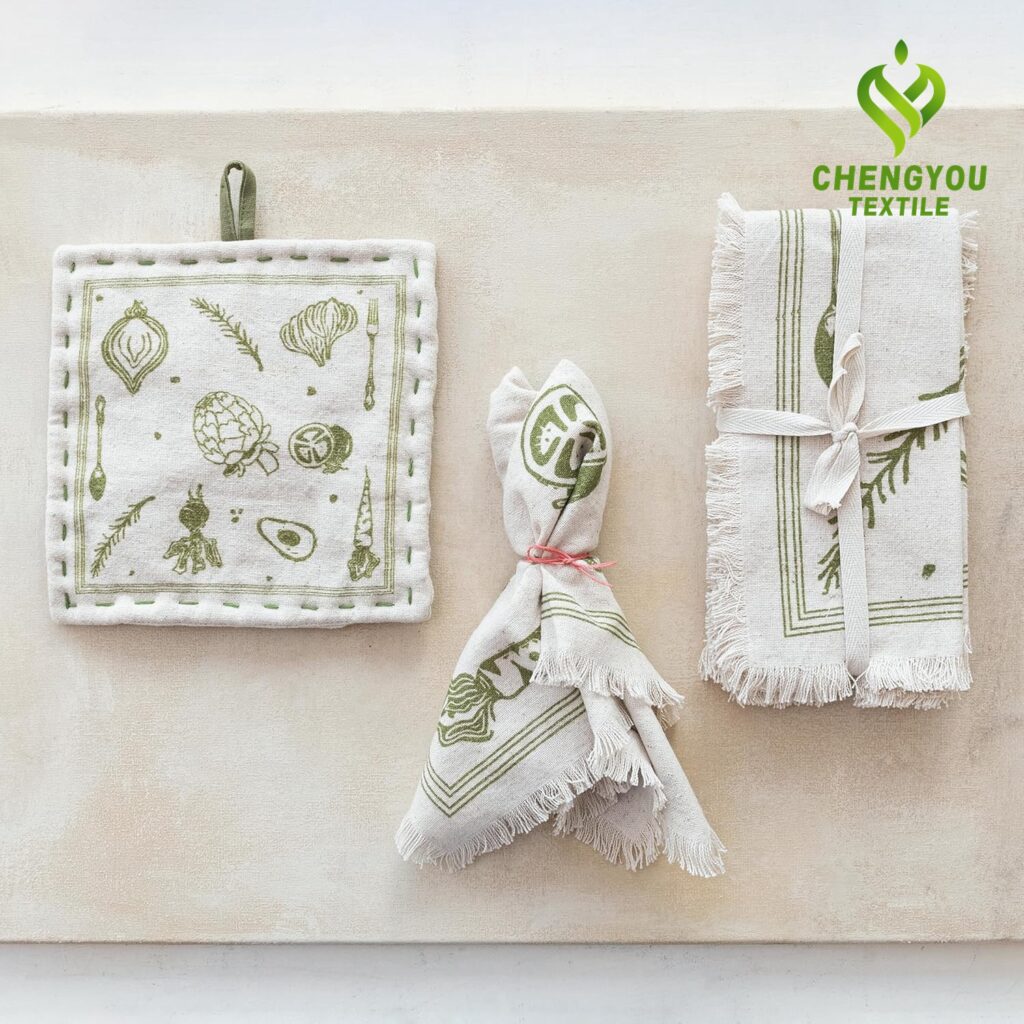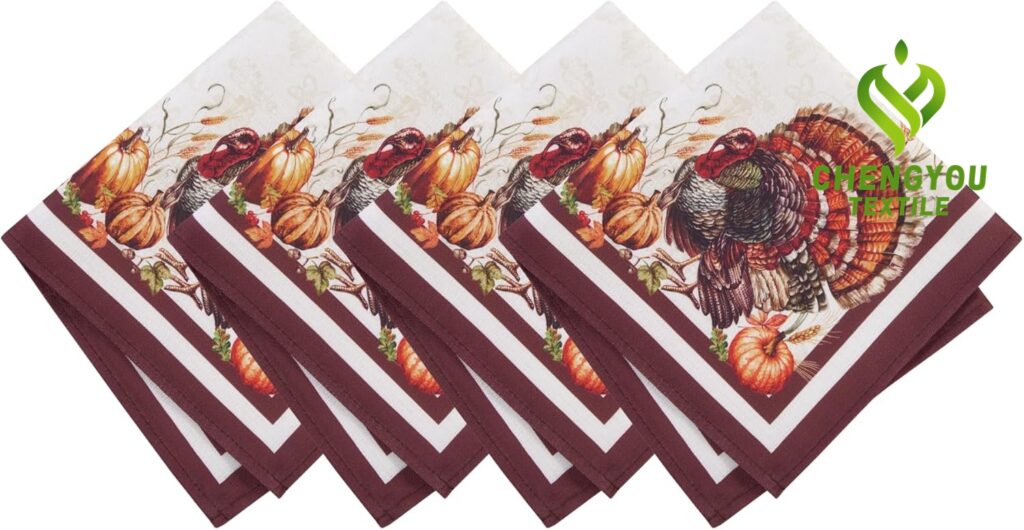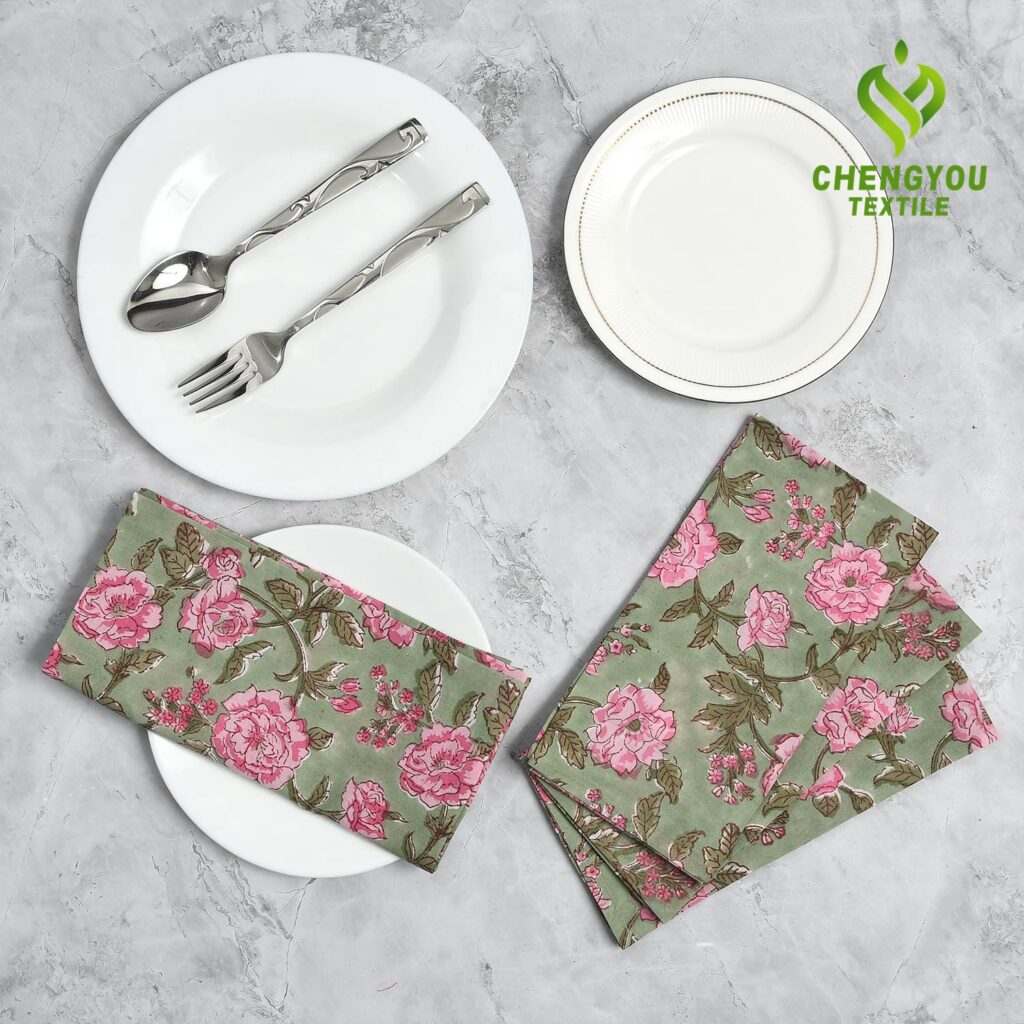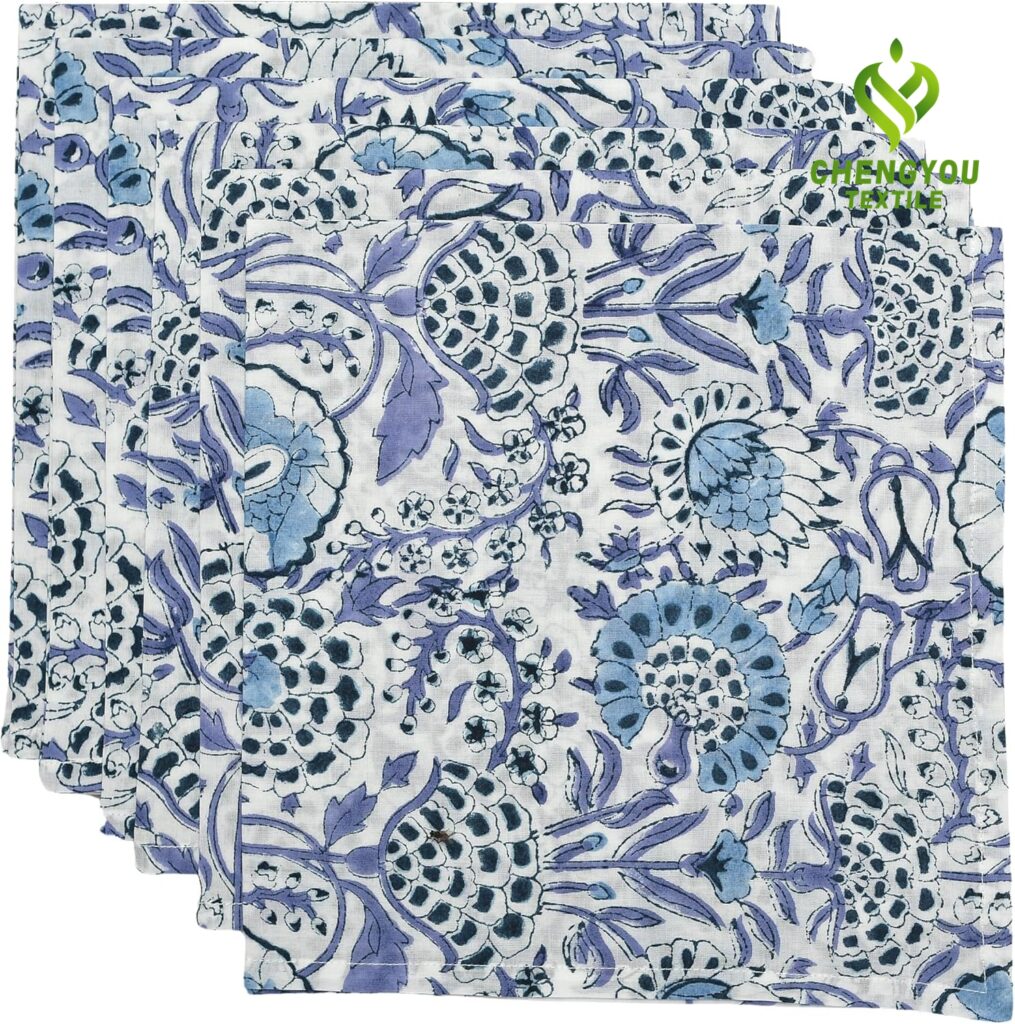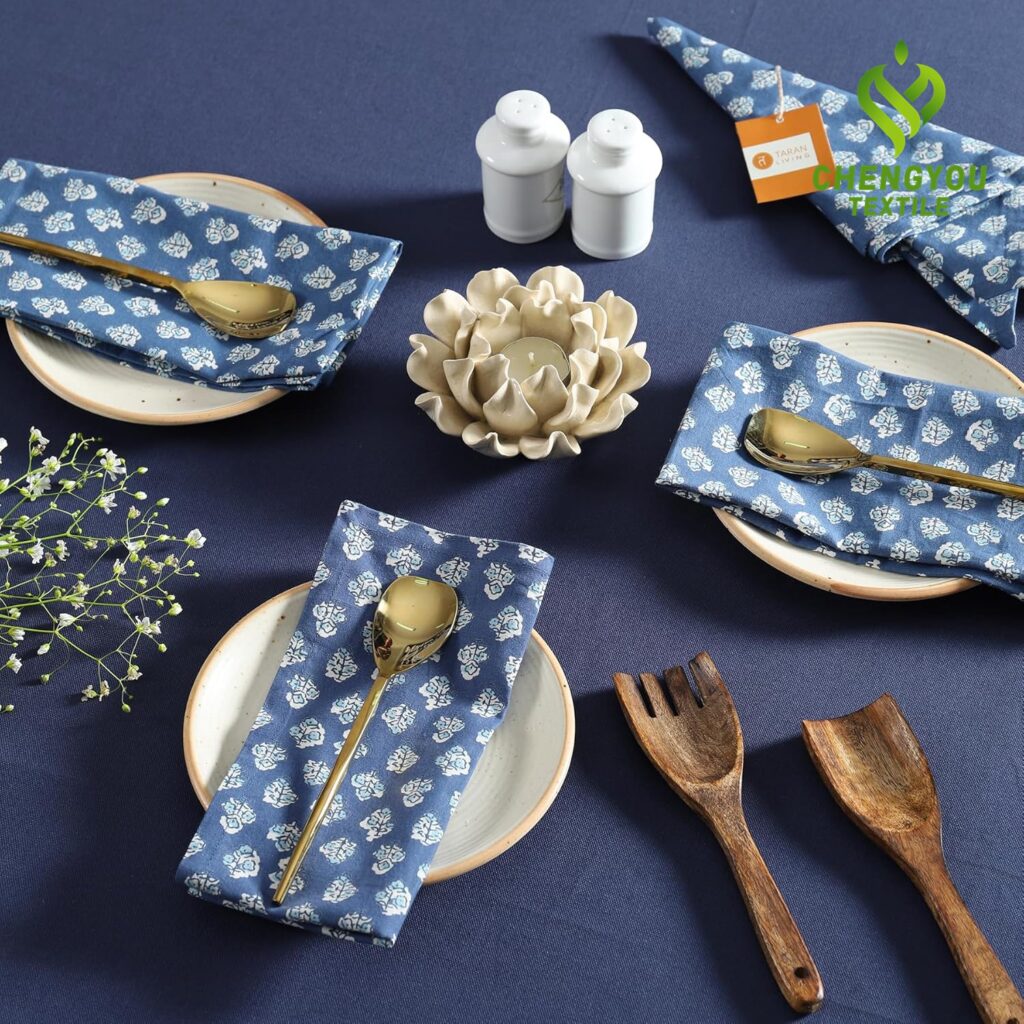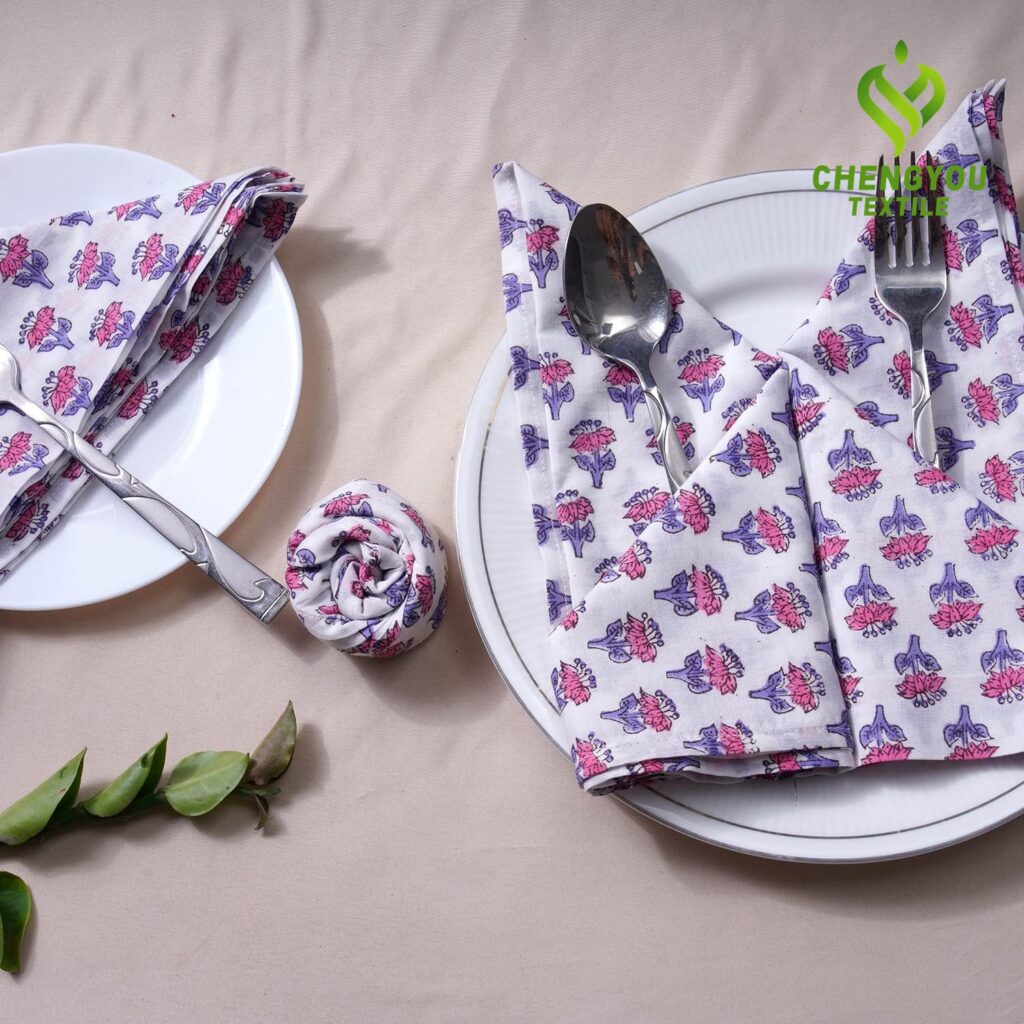Are you curious about the how a printing tablecloth or napkin come out? Let me break the secret for you!
1. Pre-treatment
Design File Preparation:The precision and size of the design files phase directly impact the quality of the final printed product.
Fabric Pre-treatment: The fabric must be pre-treated to remove any impurities and ensure it is clean and smooth. Pre-treatment is crucial as it enhances the fabric’s ability to absorb and retain the ink, leading to better print quality.
2. Ink Selection
Choosing the Right Ink: The type of ink used depends on the fabric.Additionally, the ink’s viscosity and dilution levels are adjusted to ensure smooth and consistent printing.
Setting Print Parameters: The digital printing machine is calibrated based on the fabric and ink properties. Parameters are set to achieve the best results.
According to the different characteristics of polyester, cotton, linen and spandex fabrics, corresponding to adjust the ink and adjust the machine parameters.
3. Digital Printing
Printing Process: The machine then sprays the ink onto the fabric according to the design, creating a high-resolution print.
4. Drying and Curing
Drying: After printing, the fabric is dried to remove any excess moisture.
Curing: The fabric is then subjected to heat treatment to fix the ink onto the fabric. This process ensures that the colors are permanent and resistant to washing and fading.
Common Issues in the Printing Process
Fabric Contamination: The fabric may become dirty during the pre-treatment or printing process, which will affect the final print quality. This can be prevented by maintaining a clean working environment and ensuring proper fabric handling.
Print Misalignment: The print may not align correctly with the fabric, leading to visible gaps or overlaps. This issue can be addressed by calibrating the printing machine and ensuring the fabric is properly tensioned and positioned.
Color Errors: The printed colors may not match the design specifications. This can be due to incorrect ink selection, improper color calibration, or issues with the printing machine. Using clear color references or Pantone color standards can help ensure color accuracy.
Pattern Size and Proportion Discrepancies: The final print may differ significantly from the design in terms of size and proportion. This can be due to errors in the design file or issues with the printing machine’s settings. Careful design review and machine calibration can minimize these discrepancies.
Spandex Fabric Elasticity Issues: The elastic properties of spandex fabrics can make it difficult to achieve precise print placement. This can be managed by using specialized techniques and equipment to control fabric tension and movement during printing.
Conclusion
While the production process of a plain and unremarkable printed fabric product may seem straightforward, each step is crucial for ensuring the final product meets customer expectations. Paying attention to the printing details and understanding the process differences can help optimize the process. By carefully managing these details, the customer’s favorite printing products can reach the their hands on time and in quantity.
CHENGYOU TEXTILE–WHO AM I AND WHAT IS MY MISSION
As a 12 years factory of textile products for event and home decoration, exceed clients expectations by offering superior product and service at every interaction and on every order



